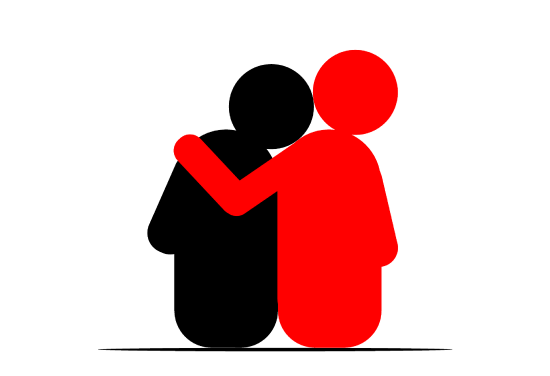6.2: Communication Climate
- Page ID
- 109688
Learning Objectives
-
Define communication climate.
-
Explain the differences between confirming and disconfirming communication climates.
-
Demonstrate how to use recognition, acknowledgment, and endorsement to create a confirming communication climate.
Do you feel organized, or confined, in a clean workspace? Are you more productive when the sun is shining than when it’s gray and cloudy outside? Just as factors like weather and physical space impact us, communication climate influences our interpersonal interactions. Communication climate is the “overall feeling or emotional mood between people” (Wood 245). If you dread going to visit your family during the holidays because of tension between you and your sister, or you look forward to dinner with a particular set of friends because they make you laugh, you are responding to the communication climate—the overall mood that is created because of the people involved and the type of communication they bring to the interaction. Let’s look at two different types of communication climates: Confirming and Disconfirming climates.
Confirming and Disconfirming Climates
We experience Confirming Climates when we receive messages that demonstrate our value and worth from those with whom we have a relationship. Conversely, we experience Disconfirming Climates when we receive messages that suggest we are devalued and unimportant. Obviously, most of us like to be in confirming climates because they foster emotional safety as well as personal and relational growth. However, it is likely that your relationships fall somewhere between the two extremes. Let’s look at how we and others create either a confirming or disconfirming climate by using--or failing to use-- three types of messages.

Recognition Messages
Recognition Messages are messages that either confirm or deny another person’s existence. For example, if a friend enters your home and your smile, hug him, and say, “I’m so glad to see you” you are confirming his existence. If you say “good morning” to a colleague and she ignores you by walking out of the room without saying anything, she is creating a disconfirming climate by not recognizing you as a unique individual. To foster a confirming climate, it is important to recognize others

Acknowledgment Messages
Acknowledgment Messages go beyond recognizing another’s existence by confirming what they say or how they feel. Nodding your head while listening or laughing appropriately at a funny story are nonverbal acknowledgment messages. When a friend tells you she had a really bad day at work and you respond with, “Yeah, that does sound hard, do you want to go somewhere quiet and talk?”, you are acknowledging and responding to her feelings. In contrast, if you were to respond to your friend’s frustrations with a comment like, “That’s nothing. Listen to what happened to me today,” you would be ignoring her experience and presenting your own experiences as more important than hers.

Endorsement Messages
Endorsement Messages go one step further by recognizing a person’s feelings as valid. Suppose a friend comes to you upset after a fight with his girlfriend. If you respond with, “Yeah, I can see why you would be upset” you are endorsing his right to feel upset. However, if you said, “Get over it. At least you have a girlfriend” you would be sending messages that deny his right to feel frustrated at that moment. While it is difficult to see people we care about in emotional pain, people are responsible for their own emotions. When we let people own their emotions and do not tell them how to feel, we are creating supportive climates that provide a safe environment for them to work through their problems
Key Takeaways
A communication is the overall feeling or mood between people.
Two types of climates are confirming and disconfirming climates.
Three types of messages that can create a confirming climate are recognition messages, acknowledgment messages, and endorsement messages.
Learning Activity
- Have you ever avoided a particular interpersonal communication situation because it was uncomfortable or you felt out of place? Could any of this have been related to disconfirming behaviors? Explain.
- Do you attempt to establish a confirming communication environment in your interactions with others? Explain.
References
Survey of Communication Study. Authored by: Scott T Paynton and Linda K Hahn. Provided by: Humboldt State University. Located at: https://en.wikibooks.org/wiki/Survey_of_Communication_Study. License: CC BY-SA: Attribution-ShareAlike
Image of 3 Types of Messages. Authored by: Spaynton. Located at: https://commons.wikimedia.org/wiki/File:Climates.png. License: CC BY-SA: Attribution-ShareAlike


